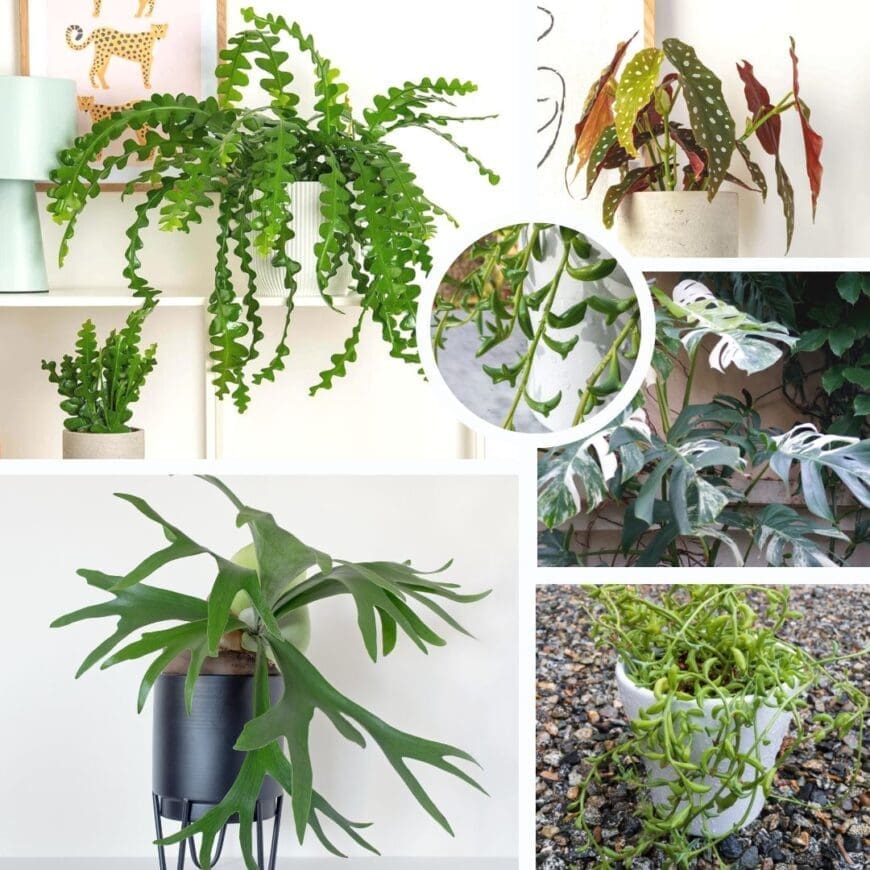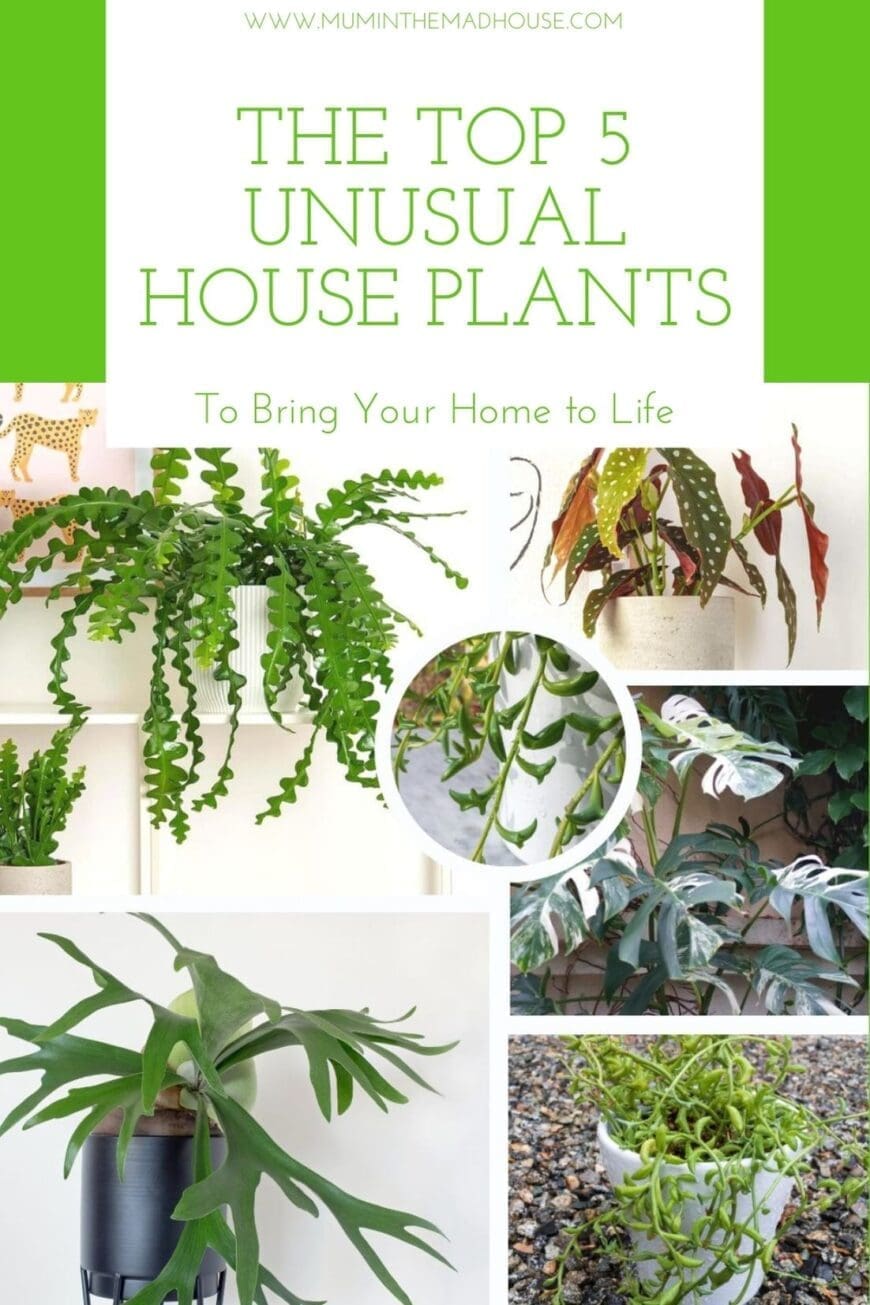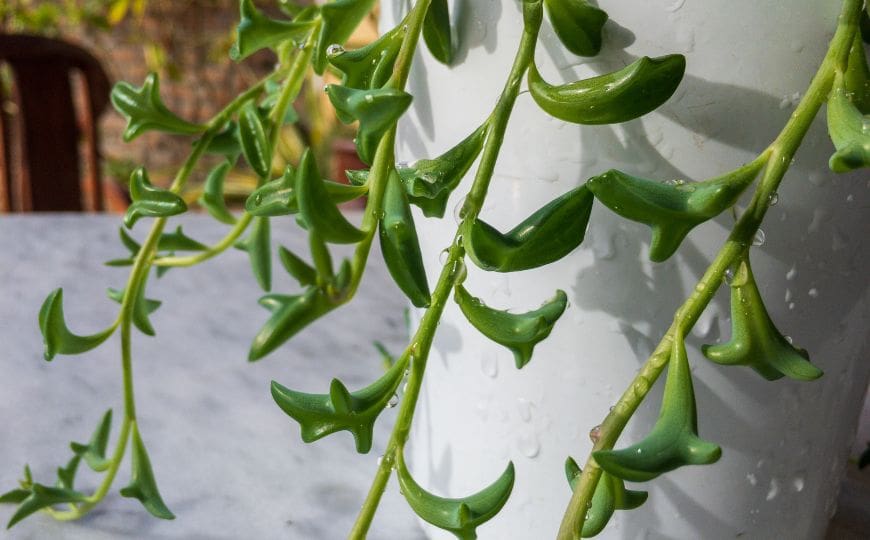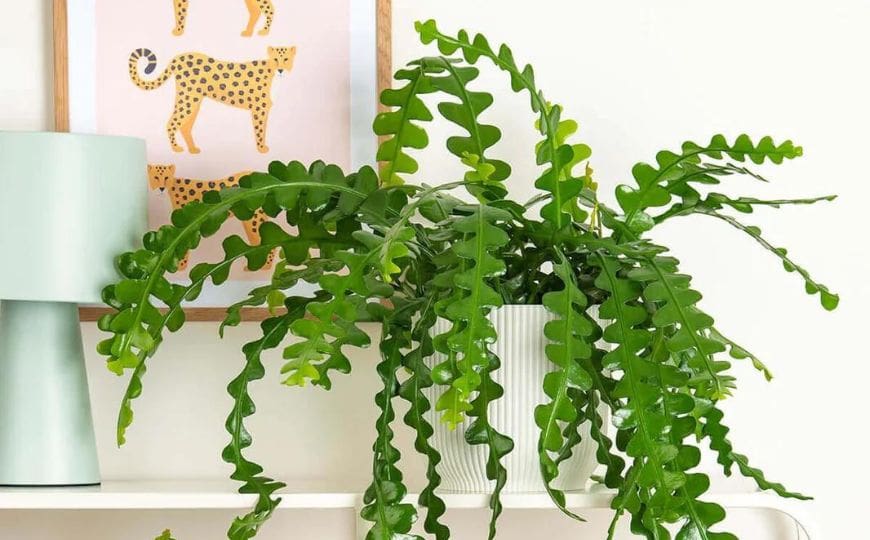Plants are having a moment. Since having to spend most of our time indoors during lockdown, it seems almost everyone has a new-found appreciation for houseplants. You only need to take a quick look at Instagram or TikTok to see just how popular indoor plants have become. From new plant parents to seasoned indoor gardeners, everyone is sharing their plant journey with followers.

If you want to stand out from the crowd, you may be looking for something a little different to jazz up your interior and bring your home to life. That’s where rare and unusual plants come in, updating a room in a fresh way that helps you stand out from the crowd.
You may think that rare plants would be tricky to look after, but some are actually surprisingly easy to care for and look after. Check out our list of some of the best uncommon and unique plants with a comprehensive care guide for each one. Check more out at Prickle Plants.

String of Dolphins (Senecio peregrinus)
This cute little houseplant gets its name from the shape of its leaves, which resemble swimming dolphins. String of Dolphins is a trailing succulent plant that grows quickly with the right plant care.

Place this plant in bright indirect light to promote full new growth without risking the leaves getting scorched by the sun streaming in a window. Because it stores moisture in its leaves, the String of Dolphins plant doesn’t need frequent watering. Allow the soil to dry out almost completely before giving the plant a drink. Ensure your potting mix drains freely and make adequate drainage holes in the bottom of the pot. String of dolphins is susceptible to root rot from over-watering, so take care that the plant isn’t left standing in water.
These succulents are easy to propagate from stem cuttings, affording you more new plants without much effort and for free.
Fishbone Cactus (Epiphyllum Anguliger)
Another trailing succulent plant, the Fishbone Cactus stands upright until the fronds are long and heavy enough to spill over the pot. Again, this plant gets its name from the shape of the long, zig-zagged leaves that look like fishbones. It looks fabulous adorning high shelves or spilling from a hanging basket.

Normal room temperature (16-25°C) is ideal for these heat-loving succulents. They prefer bright light but keep them out of direct sunlight and cold draughts. If you notice red tinges on the foliage, it’s likely that your plant isn’t getting quite enough light. Like other succulents and cacti, the Fishbone Cactus stores moisture in its vibrant green, uniquely shaped leaves, so don’t be tempted to over-water it. Wait until the soil feels dry, or you notice the fronds starting to wrinkle.
Fishbone Cacti are so low maintenance and easy to look after that they’re often found on lists of ideal plants for beginners.
Polka Dot Begonia (Begonia Maculata Polka Dot)
This striking houseplant boasts dark green foliage with reddish-purple undersides. And yes, as you’ve probably already guessed, it also gets its name from the white polka dots decorating the foliage.

Polka Dot Begonias are undemanding plants that are easy to look after. They prefer a hot, humid room (a south-facing bathroom or kitchen is perfect), but grow happily enough in a drier room with plenty of misting or a pebble tray underneath the pot. Water regularly whenever the top two inches of soil dry out. If the leaves start to brown, you’ll know your plant is overdue for a drink.
Variegated Swiss Cheese Plant (Monstera Deliciosa)
Swiss Cheese Plants aren’t generally considered to be rare houseplants. However, this variegated cultivar makes an interesting addition to any indoor garden. It features the large, split leaves you’d expect from a regular Swiss Cheese Plant but with creamy-white variegation creating unusual foliage.

Also known as a Split-Leaf Philodendron, this variegated cultivar is a rare houseplant that makes an excellent statement piece with a tropical feel. Place your Variegated Swiss Cheese Plant in a bright spot, out of direct sunlight to prevent leaf scorch. Water regularly when the top few inches of soil feel dry (use a chopstick to see how dry the soil is if you don’t want to stick your finger in.) This plant loves humidity, so use a pebble tray of water or regularly mist the foliage to keep it happy and healthy.
Staghorn Fern (Platycerium bifurcatum)
Yet more unusual plants named after their appearance, Staghorn Ferns look like… yep, animal horns. They are sometimes called Elkhorn Ferns, which shows how much the leaves look like antlers. These interesting fern plants start upright before the fronds start arching as they grow longer.

Staghorn Ferns are generally slow-growing, easy-care houseplants that don’t need much attention to thrive. They flourish in bright, indirect light and only need watered once every week or two. Because this plant has shield leaves covering the root ball, it’s best to water a Staghorn fern from below. Fill a tub, bowl, or basin with tepid water and stand the pot in it for 20-30 minutes, giving the roots time to soak up plenty of moisture. Don’t leave the plant sitting in water for long periods, and ensure excess water drains away freely after watering.
It’s worth noting that shield leaves at the bottom of Staghorn Ferns emerge green and turn brown as they mature. This is perfectly normal and doesn’t mean your plant is dying!

Why Choose Unusual Houseplants?
From the fleshy green leaves of rare succulents to the vibrant foliage of unusual leafy houseplants, adding to your indoor plant collection and keeping rare houseplants alive is excellent for your mental health and emotional well-being.
Unusual or rare houseplants are also a great way to inject some personality and style into your home decor. They may be a little trickier to come across than the humble spider plant, but they are worth the effort of tracking down. Not only will you have a new challenge in plant care, but you’ll also be the envy of friends and family – not to mention your Insta followers!
